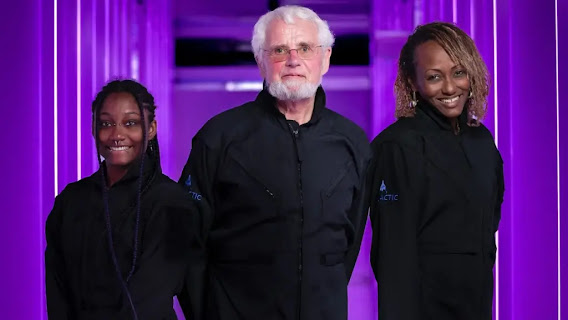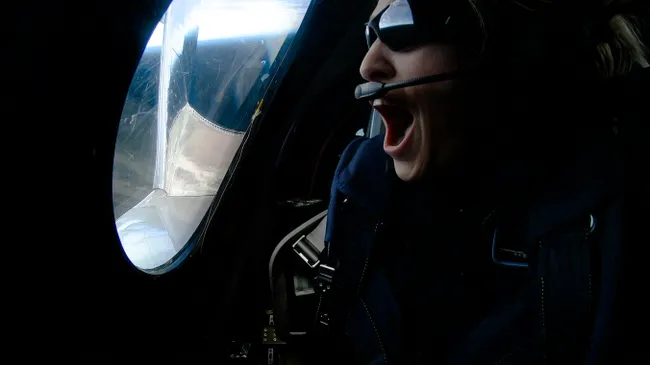In an exhilarating display of human achievement and inclusion, Virgin Galactic has once again etched its name into the annals of space history with the momentous Galactic 02 mission. On August 10th, 2023, the company achieved several remarkable milestones, showcasing not only technological prowess but also breaking barriers of gender, age, and physical condition.
Galactic 02 Mission Overview
The “Galactic 02” mission soared to unprecedented heights, carrying a total of six individuals to the edge of space and back. Among these pioneers were four women, setting a new record for the most women on a single spaceflight. This achievement underscores the company’s commitment to gender equality and its role in shaping the future of space exploration.
Historic Crew Members

Keisha Schahaff and Anastasia Mayers
One of the standout features of this historic flight was the presence of a remarkable mother-daughter duo, Keisha Schahaff and Anastasia Mayers. Hailing from the Caribbean nation of Antigua and Barbuda, Schahaff and Mayers won their seats through a fundraising competition organized by Virgin Galactic and the nonprofit Space for Humanity. This marked the first time a mother and daughter had ventured into space together, making history as the youngest-ever space flyer and the first woman from a Caribbean nation to reach the cosmos.
For Schahaff, the journey to space was a poignant realization of a childhood dream. “When I was two years old, just looking up to the skies, I thought, ‘How can I get there?’ But, being from the Caribbean, I didn’t see how something like this would be possible,” she shared. Her journey from a dreamer to a space voyager exemplifies the evolving accessibility of space travel and serves as a powerful source of inspiration for people worldwide.
At 18 years old, Anastasia Mayers became the youngest person to reach space, following in the footsteps of Oliver Daemen, who accomplished a similar feat a year earlier. Mayers’ ascent to the stars symbolizes the ever-expanding horizons of human potential, igniting the aspirations of young minds everywhere.
Jon Goodwin
The Galactic 02 mission also showcased the indomitable spirit of Jon Goodwin, an 80-year-old former Olympian who battled Parkinson’s disease. Goodwin’s determination to overcome adversity and chase his dreams encapsulated the human spirit’s boundless tenacity. “For me to go to space with Parkinson’s is completely magical. I hope this inspires all others facing adversity and shows them that challenges don’t have to inhibit or stop them from pursuing their dreams,” he declared.
Crew and Mission Details
The flight’s crew composition was equally remarkable, with Virgin Galactic’s Chief Astronaut Instructor, Beth Moses, on board. Moses, along with the pilot duo of C.J. Sturckow and Kelly Latimer, exemplified the company’s dedication to ensuring passenger safety and comfort through meticulous training and preparation. Moses’ presence in the Unity’s cabin was not only a testament to her expertise but also a critical step toward refining the passenger experience for future flights.
Impact on the Space Tourism Industry

The Galactic 02 mission was a significant milestone for the space tourism industry. It was the first commercial flight to carry paying passengers to the edge of space, including a diverse group of passengers, such as women, a mother-daughter duo, and a person with Parkinson’s disease. This success helps legitimize space tourism and demonstrates that it can be a safe and enjoyable experience for people of all ages and backgrounds.
Potential Benefits of Space Tourism
Beyond the obvious excitement and thrill of space travel, space tourism offers several other benefits:
- Economic Growth: The space tourism sector is expanding and is predicted to bring in billions of dollars over the next several years. The communities that support space tourism enterprises may see job growth and economic benefits. For instance, the Virgin Galactic spaceport in New Mexico is anticipated to bring in millions of dollars for the state’s economy and produce hundreds of jobs.
- Technological Advancements: Innovation in various industries, such as aerospace, materials science, and biotechnology, can be stimulated by space tourism. The development of reusable spacecraft, for instance, has the potential to transform space travel and lower its cost.
- Scientific and Educational Opportunities: Space tourism may present chances for scientific research and education. Space travelers can carry out experiments or gather data that advances scientific understanding of the Earth, the solar system, and the cosmos. The Galactic 02 mission, for example, carried a camera designed to capture high-definition pictures of Earth, which could be used in studies on deforestation, climate change, and other environmental issues.
- Public Interest in Space Exploration: Space tourism can help generate public interest in space exploration and encourage governments to invest in space programs.
- Development of New Markets: Space tourism can help create demand for new products and services, such as space hotels and space-based communication networks.
Challenges of Space Tourism
While space tourism is an exciting new industry, it also faces several challenges:
- High Cost: Launching rockets into space is expensive, making space travel inaccessible to most people. The Galactic 02 mission cost an estimated $450,000 per passenger.
- Dangers of Space Travel: Space travel is inherently risky. Astronauts are exposed to hazards, including radiation, microgravity, and the risk of collisions with micrometeoroids. These hazards can cause serious health problems.
- Limited Duration of Spaceflight: Most spaceflights are only a few hours or days long. Long-term spaceflight remains a significant challenge due to the effects of microgravity on the human body.
- Psychological Effects: Space travel can impact mental health due to isolation, confinement, and stress.
Conclusion
Galactic 02’s success demonstrates Virgin Galactic’s commitment to making space travel accessible to more people. The mission used a unique system: a mothership named VMS Eve carried a spaceship called VSS Unity into space. Passengers experienced several minutes of weightlessness and an awe-inspiring view of Earth from above. The spaceship reached speeds up to Mach 3 and an altitude of 55 miles.
In an era where the stars are within our grasp, Galactic 02 serves as a beacon of hope, unity, and human potential. As we look to the future, the boundaries of exploration continue to expand, and the stars become more accessible than ever before. The journey of Galactic 02 reminds us that the cosmos is not a distant dream but a tangible reality awaiting the courage and curiosity of those who dare to reach for it.
